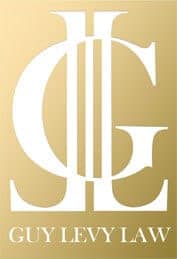Millions of people use vehicles daily in the United States to commute. Unfortunately, this means accidents can happen anytime and anywhere, even if a driver is careful. According to studies, rear-end collisions account for 29% of all vehicle crashes in the US, making them the most common type of collisions.
In rear-end accidents, most people automatically assume that the driver in the rear car (the second car) is liable. However, this isn’t always the case. Determining who’s liable in a rear-end collision requires careful examination and consideration to identify the driver at fault.
So, who is liable in a rear-end collision?
1. When the rear driver is negligent
In most cases, the rear driver is held responsible for causing a collision, especially if they were engaging in negligent acts. These include:
1. Distracted driving – This involves driving while engaging in other activities such as texting that take your attention away from the road.
2. Aggressive driving – This involves using your vehicle in a deliberate manner that endangers other drivers or property, e.g., running a stop sign.
3. Drunk driving – This is the act of driving under the influence, and it increases the risk of a collision.
4. Drowsy driving – This involves driving when you’re sleep-deprived, fatigued, or on medications that cause drowsiness.
5. Following too close – This prevents you from seeing any hazards that may occur and doesn’t give you enough time to react.
6. Speeding
If you have been involved in a rear-end accident and the rear driver is at fault, you can seek to recover compensation from their insurance company. An auto accident lawyer can help you determine fault to ensure you receive the compensation you deserve.
2. When the front driver is negligent
Although rare, some rear-end collisions are caused by the front driver. For instance, a front-driver can be distracted by a mobile phone or pedestrian, forcing them to brake abruptly to avoid colliding into other cars. This causes the car behind them to collide with their rear-end.
A front driver may also be liable when they make unnecessary lane changes, improperly merge, or cut off other vehicles. Similarly, some front cars don’t have functioning taillights, making it hard for rear drivers to see the car during a storm or at night. This increases the likelihood of a rear-end accident.
3. When third parties are negligent
A third party may be liable for a rear-end collision in the following instances:
• Pedestrians that step into traffic abruptly
• Manufacturers of defective parts that cause tires to blow out or brakes to fail
• Other car accidents blocking the road
• Government or city agencies that fail to repair roads
Why it’s essential to determine who is liable in a rear-end collision
Determining liability in a rear-end accident case is crucial as it validates your claim so that you can recover the percentage of liability that the jury assigns the at-fault driver. In auto accidents, fault is determined by negligence.
Therefore, you need to show the defendant was negligent in your claim. That’s where auto accident lawyers come in. They have the knowledge and resources required to conduct in-depth investigations to identify the driver at fault.
At Guy Levy Law, our experienced lawyers can help you determine who is liable for your rear-end accident. We are passionate, aggressive, and capable of pursuing full and fair compensation for your injuries.
We understand the process of filing a lawsuit can be tedious and challenging, and we work with your every step of the way so that you can focus on your recovery.
Contact us today to schedule your free consultation.


